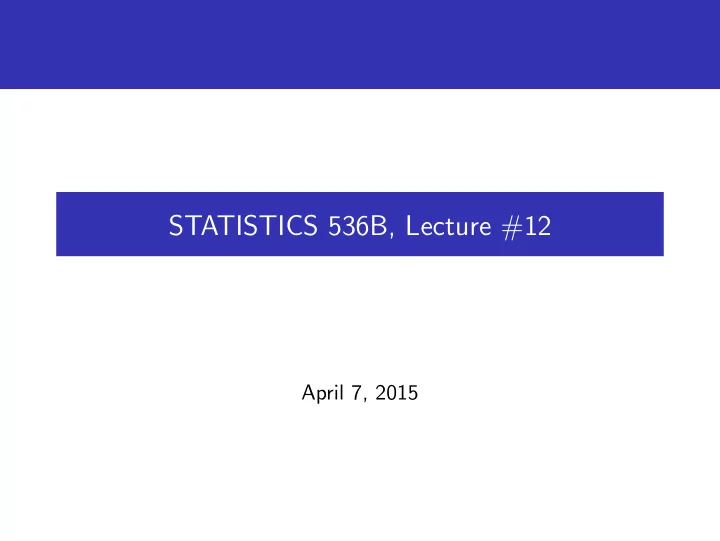

STATISTICS 536B, Lecture #12 April 7, 2015
Might some or all of an effect of X on Y be MEDIATED by another variable? M X Y Say E ( M | X ) = α 0 + α 1 X and E ( Y | M , X ) = β 0 + β 1 M + β 2 X . E ( Y | X ) =
Simple worked example Cal Garbin’s website, Pedhazur (1997) Socioeconomic Status (SES) Achievement Gradepoint Motivation (AM) Average (GPA) Intelligence Quotient (IQ) Standardize all four variables. Fit linear regressions for ( AM | SES , IQ ), ( GPA | SES , IQ , AM ). Helpful to write estimated coefficients on the diagram.
Worked example, continued - empirical evidence on which coefficients are non-zero Remove non-significant terms, refit: SES AM GPA IQ E.g., evidence that the effect of IQ on GPA is all direct, and quite strong, the effect of SES on GPA is all indirect (through AM), and much more modest.
Formalizing mediation using counterfactuals e.g., see Albert (2012, Epidemiology ), references therein Latent: M (0) , M (1) , Y (0 , 0) , Y (0 , 1) , Y (1 , 0) , Y (1 , 1) . Observed: ( X , M , Y ), where M = M ( X ) , Y = Y ( X , M ) . � Y (1 , M (0) ) − Y (0 , M (0) ) � Natural direct effects D (0) = E � Y (1 , M (1) ) − Y (0 , M (1) ) � D (1) = E � Y (0 , M (1) ) − Y (0 , M (0) ) � Natural indirect effects I (0) = E � Y (1 , M (1) ) − Y (1 , M (0) ) � I (1) = E � Y (1 , M (1) ) − Y (0 , M (0) ) � Total effect T = E Decomposition?
Building a bridge between counterfactual land and reality? Recall that if X = x then we observe Y = Y ( x , M ( x ) ) . � Y ( a , M ( b ) ) � But we are going after expressions of the form E , where a and b aren’t necessarily the same. Need assumptions: counterfactuals independent of X , the two sets of counterfactuals are independent of one another given X . Then the mediation formula holds: 1 � Y ( a , M ( b ) ) � � = E ( Y | M = m , X = a ) Pr ( M = m | X = b ) E m =0 Constitutes a bridge? Says something obvious for a = b , something deeper otherwise.
Recommend
More recommend